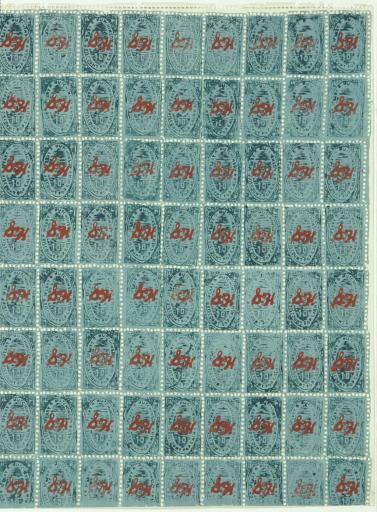S & H Green Stamps, Andy Warhol
Artwork Overview
Andy Warhol, artist
1928–1987
S & H Green Stamps,
1962
Where object was made: United States
Material/technique: ink under glass; rubber stamping
Dimensions:
Sheet/Paper Dimensions (Height x Width): 584 x 457 mm
Sheet/Paper Dimensions (Height x Width): 23 x 18 in
Frame Dimensions (Height x Width x Depth): 31 3/4 x 25 3/4 x 1 in
Weight (Weight): 9 lbs
Sheet/Paper Dimensions (Height x Width): 584 x 457 mm
Sheet/Paper Dimensions (Height x Width): 23 x 18 in
Frame Dimensions (Height x Width x Depth): 31 3/4 x 25 3/4 x 1 in
Weight (Weight): 9 lbs
Credit line: Gift from the Gene Swenson Collection
Accession number: 1970.0150
Not on display
If you wish to reproduce this image, please submit an image request












